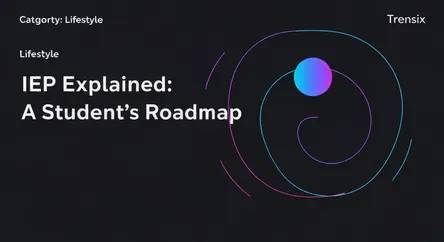Lifestyle
IEP Explained: A Student's Roadmap

Discover what an Individualized Education Program (IEP) is, how it supports students with disabilities, and why it's a key part of education.
What is it?
An Individualized Education Program (IEP) is a legally mandated document in the United States for any public school child who needs special education services. It's a customized plan designed to meet a student's unique learning needs. Developed by a team including parents, teachers, and specialists, the IEP outlines specific educational goals, accommodations, and the support services the school will provide, such as speech therapy or counseling. It ensures that students with disabilities receive a Free Appropriate Public Education (FAPE) in the least restrictive environment possible, tailored to their strengths and challenges.
Why is it trending?
Awareness around IEPs is growing due to a broader societal push for inclusive education and a greater understanding of neurodiversity and learning disabilities. Parents are becoming more informed advocates for their children's educational rights. Discussions on social media and in parenting forums have demystified the process, empowering more families to seek evaluations and support. Furthermore, educational policies increasingly emphasize personalized learning, making tools like the IEP more relevant than ever in public discourse about educational equity.
How does it affect people?
For students, an IEP can be life-changing. It provides the necessary tools and accommodations—like extended test times or assistive technology—that allow them to access the curriculum and succeed academically and socially. For parents, it offers a formal structure to collaborate with the school and ensure their child's needs are being met and monitored. For educators, it serves as a critical guide for instruction and support, though it also requires careful planning and documentation to implement effectively, fostering a more student-centered approach in the classroom.